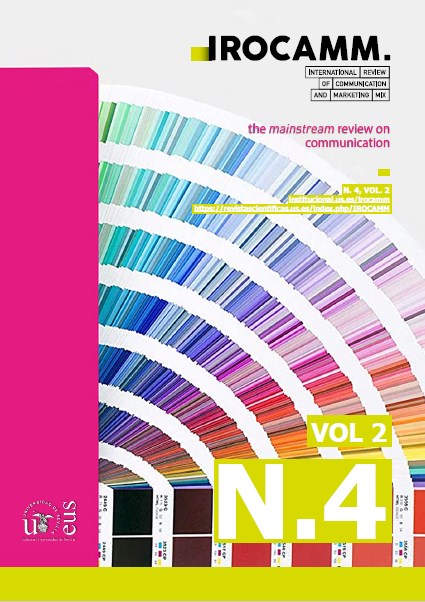Abstract
During the worldwide pandemic many businesses started or significantly increased their online presence on major e-commerce platforms either as vendors or as sellers. These small and medium businesses need to understand what level of advertising support they need, if any, and how it can impact their performance objectives. This paper investigates how advertising influences the timing of online customer reviews after a product introduction at a major retailer with both physical stores and online e-commerce presence open to both business sellers and vendors of various sizes. The faster time to reach customer reviews is a proxy of customer product acceptance and should inform online businesses on their advertising needs when they introduce their products on e-commerce platforms. This paper demonstrates that without advertising support the time needed to reach ten customer reviews increases by 46%.
References
Acker, T. (2019) Best Practices for Launching a New Product on Amazon. AdCon. https://tinyurl.com/4ztnzu82
Archak, N., Ghose, A., & Ipeirotis, P. G. (2011). Deriving the pricing power of product attributes by mining consumer reviews. Management Science, 57(8), 1485–1509.
Arens, Z. & Hamilton, R. (2016) Why Focusing on the Similarity of Substitutes Leaves a Lot to Be Desired. Journal of Consumer Research, 43(3), 448-459. https://tinyurl.com/6xfus4hb
Babić Rosario, A., Sotgiu, F., & De Valck, K. (2020). Conceptualizing the electronic word-of-mouth process: What we know and need to know about eWOM creation, exposure, and evaluation. Journal of the Academy of Marketing Science, 48, 422-448.
Bucklin, R. & Bagheri, S. (2020) Visual Notes MSI State of Marketing Science Summit: Marketing in Disruption https://tinyurl.com/8xjvfcfv
Du, R. Y., Netzer, O., Schweidel, D.A., & Mitra, D. (2021) Capturing Marketing Information to Fuel Growth. Journal of Marketing, 85(1), 163–183. https://doi.org/10.1177/0022242920969198
Feng, J., & Papatla, P. (2012) Is Online Word of Mouth Higher for New Models or Redesigns? An Investigation of the Automobile Industry. Journal of Interactive Marketing, 26 (2), 92-101 https://tinyurl.com/t3r3ara8
Golder, P. N., & Tellis, G. J. (1997). Will it ever fly? Modeling the takeoff of really new consumer durables. Marketing Science, 16(3), 256-270.
Hanssens, D. M., & Pauwels, K. H. (2016). Demonstrating the value of marketing. Journal of Marketing, 80(6), 173-190.
Hollenbeck, B., Moorthy, S., & Proserpio, D. (2019). Advertising strategy in the presence of reviews: An empirical analysis. Marketing Science, 38(5), 793-811.
Hulland, J., & Houston, M.B. Why systematic review papers and meta-analyses matter: an introduction to the special issue on generalizations in marketing. Journal of the Academy of Marketing Science, 48, 351–359 (2020). https://doi.org/10.1007/s11747-020-00721-7
Lavidge, R.J. & Steiner G.A. (1961). A model for predictive measurements of advertising effectiveness, Journal of Marketing, 25 (October), 59-62.
Layugan, S. (2020). How to plan a new product launch with digital marketing, ThomasNet, June 30. https://tinyurl.com/4bcex2bz
Lu S., Wu J., & Tseng S-L-A. (2018) How Online Reviews Become Helpful: A Dynamic Perspective. Journal of Interactive Marketing, 44, 17-28. https://tinyurl.com/hn3wxvmk
Ma, J., & Du, B. (2018). Digital advertising and company value: Implications of reallocating advertising expenditures. Journal of Advertising Research, 58(3), 326-337.
Maslowska, E., Malthouse, E. C., & Viswanathan, V. (2017). Do customer reviews drive purchase decisions? The moderating roles of review exposure and price. Decision Support Systems, 98, 1-9.
Matz S. C. & Netzer O. (2017) Using Big Data as a window into consumers’ psychology. Current Opinion in Behavioral Sciences, 18, 7-12. https://tinyurl.com/nnps7cuc
Park, K. M., Chintagunta, P. K., & Suk, I. (2019). Capital market returns to new product development success: Informational effects on product market advertising. Journal of Marketing Research, 56(1), 37-56.
Pauwels, K., & van Ewijk, B. (2020) Enduring Attitudes and Contextual Interest: When and Why Attitude Surveys Still Matter in the Online Consumer Decision Journey. Journal of Interactive Marketing 52, 20-34.
Pauwels, K. (2020), Partner presentation session in Machine Learning & AI Anwendungen im Marketing, Marketing Analytics Summit, 16.-17. November. https://tinyurl.com/98skvye5
Schoenmueller, V., Netzer O., & Stahl F. (2020) The Polarity of Online Reviews: Prevalence, Drivers and Implications. Journal of Marketing Research 57, no. 5, 853-877.
Srinivasan, S., Pauwels, K., Silva-Risso, J., & Hanssens. D. M. (2009) Product innovations, advertising, and stock returns. Journal of Marketing 73(1), 24-43.
Srivastava, R. K., Shervani, T. A., & Fahey, L. (1998). Market-based assets and shareholder value: A framework for analysis. Journal of marketing, 62(1), 2-18.
Tellis, G. J. (2005). Advertising's role in capitalist markets: What do we kn10ow and where do we go from here?. Journal of Advertising Research, 45(2), 162-170.

This work is licensed under a Creative Commons Attribution-NonCommercial-ShareAlike 4.0 International License.
Copyright (c) 2021 IROCAMM - International Review Of Communication And Marketing Mix

